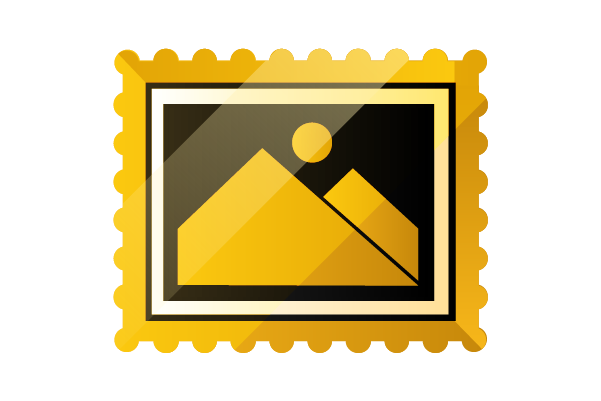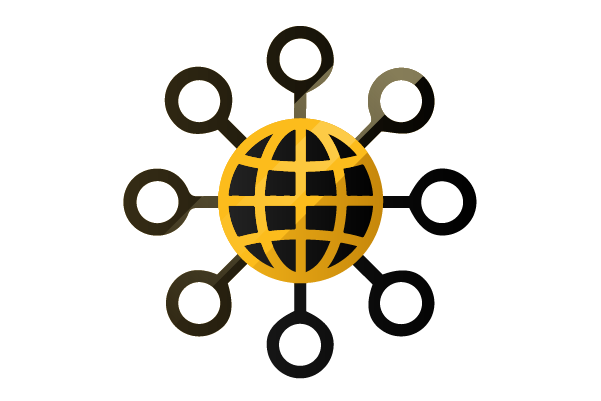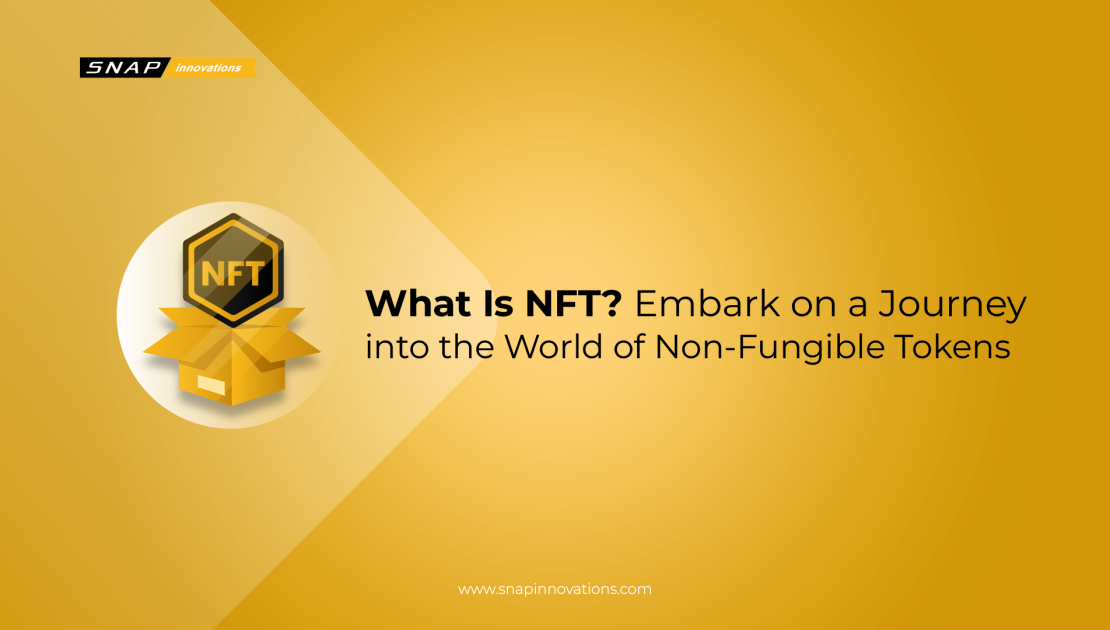Welcome to the exciting world of Non-Fungible Tokens, or NFTs! If you’ve been hearing buzz about NFTs and wondering what they are and why they matter, you’ve come to the right place. In this comprehensive guide, we’ll embark on a fascinating journey deep into the heart of NFTs, demystifying these unique digital assets and uncovering the reasons behind their meteoric rise to prominence in the realms of art, entertainment, and technology.
Whether you’re an artist looking to tokenize your creations, an investor exploring new opportunities, or simply curious about the digital revolution sweeping across various industries, this guide is your gateway to understanding NFTs from the ground up. So, let’s dive in and explore the captivating world of Non-Fungible Tokens, where digital ownership and authenticity take center stage!
What Is NFT?
 NFT, short for Non-Fungible Token, is a term that has taken the digital world by storm. At its core, an NFT is a unique digital asset that represents ownership or proof of authenticity of a specific item, artwork, or piece of content, using blockchain technology. Unlike cryptocurrencies like Bitcoin or Ethereum, which are fungible and interchangeable with one another, NFTs are entirely distinct and cannot be exchanged on a one-to-one basis. Each NFT has its own distinct value and cannot be replicated.
NFT, short for Non-Fungible Token, is a term that has taken the digital world by storm. At its core, an NFT is a unique digital asset that represents ownership or proof of authenticity of a specific item, artwork, or piece of content, using blockchain technology. Unlike cryptocurrencies like Bitcoin or Ethereum, which are fungible and interchangeable with one another, NFTs are entirely distinct and cannot be exchanged on a one-to-one basis. Each NFT has its own distinct value and cannot be replicated.
The uniqueness and indivisibility of NFTs are what set them apart. Each NFT is stored on a blockchain, which is a decentralized and transparent digital ledger. This ensures that the ownership and transaction history of an NFT are easily verifiable and tamper-proof. Artists, creators, and even collectors are using NFTs to revolutionize how digital art and collectibles are bought, sold, and owned.
In addition to their creative and artistic applications, NFTs are also being used in innovative ways in fields such as education and certification. NFTs can represent diplomas, certificates, and credentials, providing a secure and tamper-proof way to verify qualifications. This has the potential to simplify the hiring process, streamline education verification, and reduce fraudulent claims.
In essence, NFTs are a technological marvel that is reshaping the digital landscape. They are democratizing ownership, empowering creators, and unlocking new avenues for creativity and commerce. As we continue to explore the world of NFTs, we’ll uncover even more exciting use cases and possibilities that this groundbreaking technology has to offer.
How NFTs Work
 1. The Technology Behind NFTs
1. The Technology Behind NFTs
To understand how NFTs work, it’s essential to grasp the technology that underpins them. NFTs are built on blockchain technology, which is a decentralized and immutable ledger. This ledger records all transactions related to NFTs, including their creation, ownership changes, and sales. Ethereum, one of the most popular blockchains, is the primary platform for NFTs, but other blockchains like Binance Smart Chain and Flow have also gained traction in the NFT space.
These alternative blockchains have garnered substantial recognition for their unique attributes, offering lower transaction fees, quicker confirmation times, and different features tailored to the diverse preferences of creators, collectors, and investors in the NFT space.
2. Creating NFTs
Creating an NFT involves a process known as “minting.” During minting, a digital file is associated with a unique token on the blockchain. This token includes metadata that describes the NFT, such as its title, creator, and a link to the digital file. Minting NFTs typically incurs a cost, often referred to as a “gas fee,” which compensates miners for processing the transaction.
This token is the digital certificate of authenticity, and it’s what confers non-fungibility upon the asset. Within this token resides metadata, a treasure trove of information that provides a comprehensive snapshot of the NFT.
Read more: Market Making Software: A Comprehensive Guide
3. Owning and Transferring NFTs
Once an NFT is minted, it can be bought, sold, or traded like any other asset. Ownership of an NFT is determined by who holds the private key associated with it. This key is essential for transferring or selling the NFT. When a transaction occurs, it is recorded on the blockchain, updating the ownership of the NFT accordingly.
The journey of an NFT doesn’t conclude with its minting; instead, it marks the commencement of its life within the digital marketplace. Once an NFT is successfully minted, it attains the status of a digital asset that can be seamlessly bought, sold, or traded, mirroring the fluidity of traditional tangible assets.
4. Proving Authenticity and Ownership
One of the most significant advantages of NFTs is their ability to prove the authenticity and ownership of digital assets. When you own an NFT, you can be confident that you possess a legitimate, verifiable copy of a digital item, whether it’s a piece of art, music, virtual real estate, or a tweet.
This transformational capability brings an unparalleled level of trust and transparency to the digital landscape. Gone are the days of uncertainty and doubt regarding the provenance of digital assets.
5. The Role of Smart Contracts
Smart contracts are the backbone of NFT functionality. These self-executing contracts are programmed with specific instructions that automate various processes in the NFT ecosystem. When you purchase an NFT, a smart contract governs the transfer of ownership and ensures that the transaction is transparent and irreversible.
Smart contracts also enable royalties for creators, automatically sending a percentage of subsequent sales back to the original artist. This innovation has transformed how creators are compensated for their work, creating ongoing revenue streams long after the initial sale.
6. Interoperability and Standards
As the NFT space has evolved, interoperability and standards have become increasingly important. Industry standards like ERC-721 and ERC-1155 have emerged to ensure that NFTs from different projects can function seamlessly on various platforms and marketplaces. These standards provide a common language for NFTs, making it easier for creators and collectors to navigate the expanding NFT ecosystem.
The development of these standards highlights the collaborative nature of the NFT community, working together to build a more robust and interconnected digital asset landscape.
7. NFT Wallets and Marketplaces
To participate in the NFT ecosystem, individuals need an NFT wallet. These wallets are specialized digital wallets that can hold and manage NFTs. They also enable users to interact with NFT marketplaces, where NFTs are bought, sold, and traded.
Popular NFT marketplaces like OpenSea, Rarible, and NBA Top Shot have gained widespread attention, showcasing a diverse range of digital collectibles, art, and entertainment. As the NFT market continues to grow, new marketplaces and wallet options are emerging, offering users more choices and opportunities to engage with NFTs.
8. Beyond Digital Art
While digital art and collectibles have been the most prominent use cases for NFTs, the technology’s versatility extends far beyond these realms. NFTs can represent ownership of virtual real estate in virtual worlds like Decentraland or The Sandbox.
They can also serve as tickets to exclusive online events or memberships in decentralized autonomous organizations (DAOs) that grant voting rights to token holders. The adaptability of NFTs means they can be applied to virtually any digital or physical asset, opening doors to innovative applications we have yet to discover.
The NFT Ecosystem
 The NFT (Non-Fungible Token) ecosystem is a dynamic and multifaceted landscape that encompasses a wide range of participants, platforms, and applications. It represents a paradigm shift in how digital assets, ownership, and authenticity are perceived and exchanged. Creators, collectors, and marketplaces form the core of this ecosystem, with blockchain networks serving as the foundation for NFT creation and transactions.
The NFT (Non-Fungible Token) ecosystem is a dynamic and multifaceted landscape that encompasses a wide range of participants, platforms, and applications. It represents a paradigm shift in how digital assets, ownership, and authenticity are perceived and exchanged. Creators, collectors, and marketplaces form the core of this ecosystem, with blockchain networks serving as the foundation for NFT creation and transactions.
Digital wallets enable secure storage and management of NFTs, while virtual worlds and metaverse platforms provide immersive environments for showcasing and trading digital assets. DeFi integration, ongoing innovations, and thriving communities further contribute to the ever-expanding possibilities within the NFT ecosystem, redefining the way we interact with digital content and ownership.
In essence, the NFT ecosystem is a dynamic and ever-expanding universe where creativity knows no bounds. It’s not merely a market; it’s a cultural movement that’s revolutionizing art, entertainment, gaming, and various other industries. As NFTs continue to evolve and infiltrate new domains, they hold the potential to redefine how we create, share, and value digital and physical assets, offering a glimpse into a future where ownership, creativity, and authenticity are reimagined
The Challenges and Controversies of NFT
As the world of Non-Fungible Tokens (NFTs) continues to expand and captivate, it is not without its share of challenges and controversies. These intricacies and debates are an essential part of understanding the broader impact of NFTs in various industries and their influence on the digital landscape. In this section, we’ll delve into some of the critical challenges and controversies surrounding NFTs, shedding light on the discussions and debates that shape the evolving narrative of this groundbreaking technology.
As the world of Non-Fungible Tokens (NFTs) continues to expand and captivate, it is not without its share of challenges and controversies. These intricacies and debates are an essential part of understanding the broader impact of NFTs in various industries and their influence on the digital landscape. In this section, we’ll delve into some of the critical challenges and controversies surrounding NFTs, shedding light on the discussions and debates that shape the evolving narrative of this groundbreaking technology.
1. Environmental Concerns
One of the foremost controversies surrounding NFTs revolves around their environmental footprint. The energy-intensive process of minting NFTs and validating transactions on blockchain networks, particularly on the Ethereum blockchain, has raised concerns about carbon emissions and energy consumption.
Critics argue that the carbon footprint associated with NFTs contradicts the broader goal of sustainability and environmental responsibility. This debate has prompted discussions about the need for more eco-friendly blockchain solutions and the adoption of energy-efficient consensus mechanisms.
2. Copyright and Intellectual Property
The digital nature of NFTs has given rise to intricate questions about copyright and intellectual property. While NFTs provide a transparent and immutable record of ownership, they also challenge traditional notions of copyright, fair use, and the control artists or creators have over their work.
Instances of unauthorized tokenization of content have sparked legal disputes and discussions around the need for clearer regulations in the NFT space. The development of standardized licensing and rights management solutions for NFTs is a topic of ongoing debate.
3. Scalability and Network Congestion
The popularity of NFTs has led to network congestion and scalability issues on blockchain platforms like Ethereum. High gas fees and slow transaction times have posed significant hurdles for artists and collectors, limiting the accessibility and affordability of NFT transactions.
Blockchain developers and enthusiasts are actively seeking solutions to address these challenges and improve the user experience. Layer 2 scaling solutions and blockchain upgrades are among the measures being explored to mitigate congestion and reduce transaction costs.
4. Speculation and Price Volatility
NFTs have garnered attention not only for their utility but also as speculative investments. The rapid appreciation of certain NFTs has led to concerns about price volatility and the potential for market bubbles.
Navigating the fine line between genuine interest in digital art and speculative frenzy is an ongoing debate within the NFT community. Some argue that price volatility can hinder the broader adoption of NFTs for non-speculative purposes, while others view it as an inherent characteristic of emerging markets.
5. Inclusivity and Accessibility
While NFTs have democratized access to art and collectibles in many ways, they have also faced criticism for their potential to exclude certain demographics due to technological barriers or financial constraints.
Ensuring that NFTs remain inclusive and accessible to a diverse audience is a challenge that the NFT ecosystem must address. Initiatives aimed at reducing entry barriers, such as user-friendly wallets and educational resources, are gaining traction as part of ongoing efforts to promote inclusivity.
6. Regulatory Oversight
The nascent nature of the NFT market has left it relatively unregulated, which has both advantages and disadvantages. While this lack of regulation allows for innovation and experimentation, it also leaves room for fraud, scams, and market manipulation.
The debate over whether and how to implement regulatory oversight in the NFT space continues to evolve. Discussions are centered on striking a balance between fostering innovation and protecting users from potential risks and fraudulent activities. Clearer guidelines and standards are being sought to ensure the integrity and security of the NFT market.
7. Cultural and Ethical Considerations
NFTs have sparked discussions about cultural appropriation, representation, and ethical considerations, particularly in the realm of digital art and virtual spaces. These conversations center around issues such as who gets to tokenize cultural artifacts, how marginalized communities are represented, and the ethical responsibilities of creators and collectors in the NFT ecosystem. Finding ethical frameworks and culturally sensitive approaches to NFT creation and ownership is a critical aspect of addressing these concerns.
Navigating these multifaceted challenges and controversies is an integral part of the ongoing evolution of NFTs. As the technology matures and the ecosystem adapts, addressing these issues will play a crucial role in shaping the future of NFTs and their impact on various industries and communities. The NFT ecosystem, with its complexities and debates, continues to be a focal point of exploration and innovation in the digital age.
The Future of NFTs
The future of Non-Fungible Tokens (NFTs) is a captivating landscape teeming with potential and innovation. As we peer into the horizon, it’s evident that NFTs are poised to play an increasingly transformative role in our digital lives and the broader economy. Their journey is far from over, with numerous exciting possibilities awaiting exploration.
NFTs are expected to continue expanding their reach, infiltrating domains beyond art and collectibles, including education, healthcare, and the metaverse. In education, NFTs could revolutionize credentialing and the verification of academic achievements, offering a secure and immutable record of qualifications.
Also Read: Derivatives Trading Software: Everything You Need to Know
Healthcare may see NFTs ensuring the privacy and integrity of patient records, enabling seamless data sharing among healthcare providers. Meanwhile, the metaverse, an evolving virtual universe, is likely to rely heavily on NFTs for digital land ownership, avatar customization, and in-world commerce. Additionally, advancements in interoperability among different blockchain networks may enhance the fluidity of NFT movement and transactions, reducing fragmentation in the NFT space.
As NFT technology matures, so too will the development of tools and platforms to simplify the creation and management of NFTs, making it more accessible to creators and users alike. Furthermore, the integration of NFTs with augmented reality (AR) and virtual reality (VR) could result in immersive experiences that blur the lines between the physical and digital worlds. However, alongside these opportunities, the challenges and controversies surrounding NFTs, such as environmental concerns and regulatory oversight, will continue to be topics of discussion and action. Nevertheless, the future of NFTs appears bright, with the potential to redefine ownership, authenticity, and engagement in our increasingly digital and interconnected world.
Conclusion
In conclusion, Non-Fungible Tokens, or NFTs, have ushered in a new era of ownership and creativity in the digital world. From art and gaming to music and collectibles, NFTs have transformed various industries and opened up exciting possibilities for creators and collectors alike. While they come with challenges and controversies, the future of NFTs holds the promise of mainstream adoption, enhanced ownership experiences, and positive cultural impact.
As you explore the world of NFTs, remember to stay informed, exercise caution, and embrace the opportunities that this revolutionary technology offers. Whether you’re an artist looking to monetize your digital creations or an investor seeking new opportunities, NFTs are a dynamic space worth exploring. Welcome to the NFT revolution!

